| In approaching New Orleans we had gone up to the river in order
to look at the plantation houses. This precluded us visting the swamp areas
to the south of the city. So we took a day out to go south out of New
Orleans to the Jean
Lafitte Barataria National Park. Here you realize that nature took a hit
as well with many of the trees being blown over. | 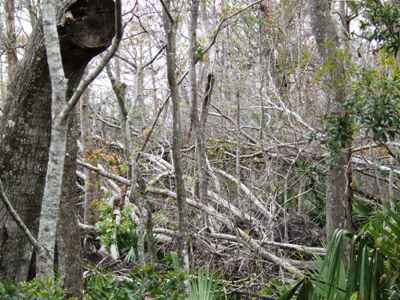 |
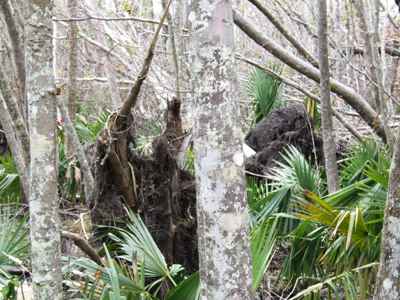 | These areas
will not be cleaned up although the buildings have been repaired and the paths and roads have/will be cleared.
Recovery will just be a natural process. Most of the trees live with their
roots in water and thus are quite shallow rooted. Many of the large canopy
trees like the oaks have been blown over. |
| The oaks grow on the ridges which are (marginally) drier. As you
go down the slopes the water level rises and the predominant trees are
cypress. These have 'knees' which are like short stumps, but nobody seems
sure what their role is. They may be anchors, or they may be
snorkels -- providing gas exchange to oxygenate the underwater roots. | 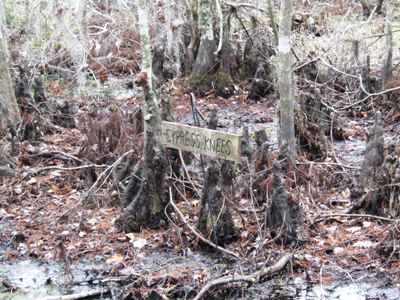 |
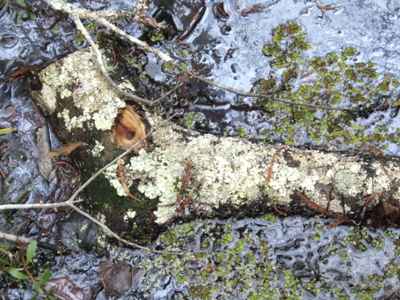 | We found many
more lichens and moulds including some of a pinkish colour. Up to now most
of the ones we have seen have been in dry or high areas. Low wet moulds are
different varieties. |
| As you move lower still you get to the areas where the reeds grow
and the trees can no longer cope with the waterlogged soil. The dividing
line is very sudden. | 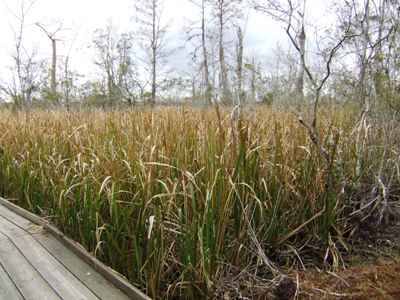 |
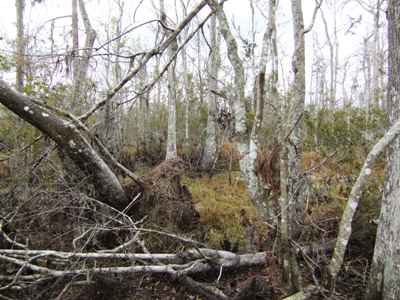 | There are few
leaves on the trees at this time of year so sometimes it is difficult to
work out what is alive and what is dead. I imagine this will be a much
greener area in the spring. |
| This is a bald cypress. Most of these were logged out of the
swamps in the past. They can grow 100ft high and 15ft in diameter. The wood
is soft and easy to work but is resistant to rot. It was commonly used for
building in the area. It is very slow growing and can live for thousands of
years. | 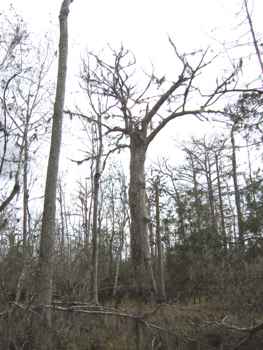 |
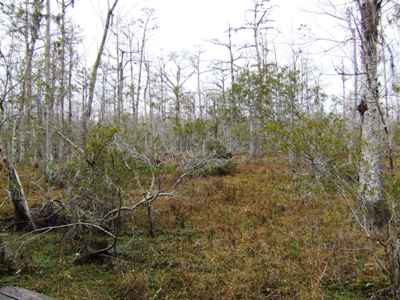 | It looks as
though you could just walk across but I suspect you could vanish just as
easily. This area is very wet and even in this 'quiet' season, we could
still hear frogs. |
| This is even wetter with just a layer of algae on top of the
water. The trees all have this odd thickening at the base. We had wondered
if we would see alligators, but were told that they are virtually dormant at
this time of year although they don't actually hibernate. | 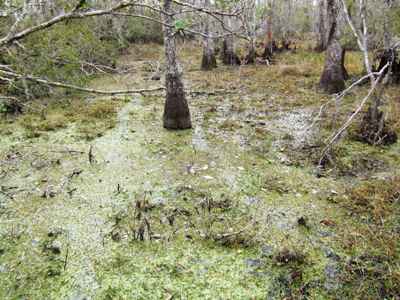 |
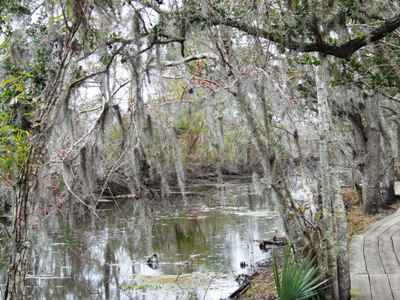 | This is a canal
or drainage channel. Sometimes the water flows very slowly in one direction,
sometimes in reverse, according to the currents. Many areas just get covered
with a layer of weed, algae and other detritus. I just thought this view is
very much how I imagined it would be. |
| The reflections in the water show just how still this water is,
although there were fish rising to catch insects and a few birds flying from
bank to bank. | 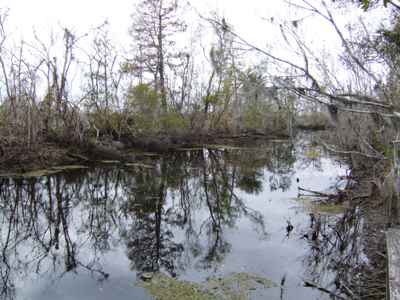 |
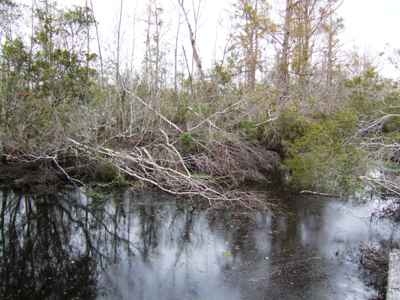 | They used to
log the trees in the autumn when the sap had stopped rising so the logs
actually weighed less. Then they would float them out in the spring. Now
many of these passages are clogged with undergrowth reaching out from both
banks. |
| This is the Kemah canal stretching up towards New Orleans. You
can actually see a skyscraper at the end of this canal, but it gets lost in
this smaller and compressed picture. It seemed so peaceful but I'm sure it
wasn't during Katrina. |  |
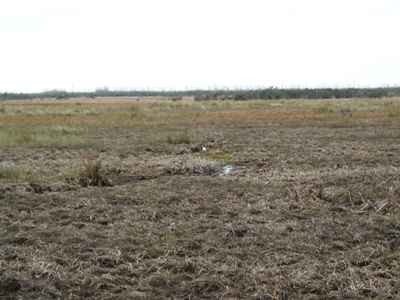 | The end of the
trail we followed arrives at this 'meadow' which is actually a floating mat
of vegetation and therefore very wet. We sat and watched the egrets fishing
for a while before walking back along the 2.5 mile boardwalk. |
| This egret was walking carefully through what was some sort of
water weed, pausing to catch the odd small fish as it travelled. | 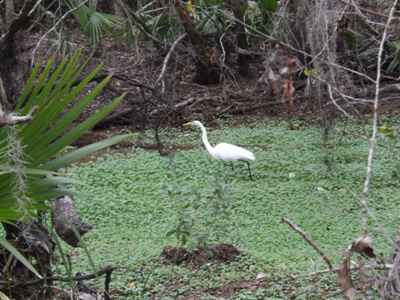 |
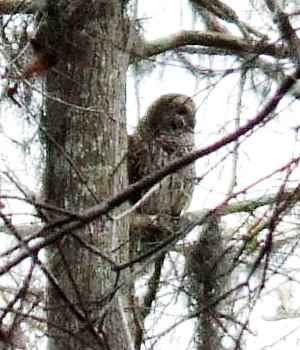 | We disturbed
another of the birds as we walked. This was an owl which was nervous of our
presence and flew to a more distant perch. Sorry if the picture is almost
pixelated. This is at the limit of what can be extracted from a digital
photo even at 9M pixels. |
| Most of the rustlings we heard were squirrels stopping to eat
seeds. Perhaps they don't need to hibernate in these warm southern climates. | 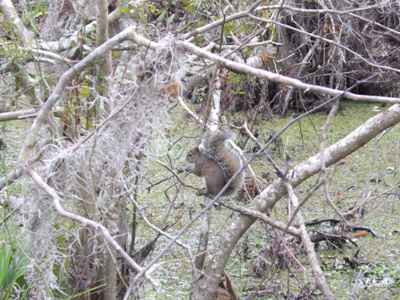 |
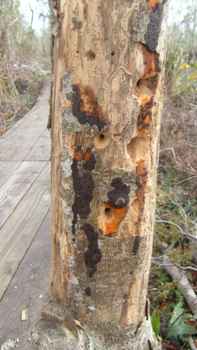 | We both heard
and saw woodpeckers and found evidence of their activities. This tree was
full of holes. It must have been very tasty or home to some particularly
tasty insects. One other interesting snippet is that quite a number of the
original immigrants to this area came from the Canary Islands. |
|